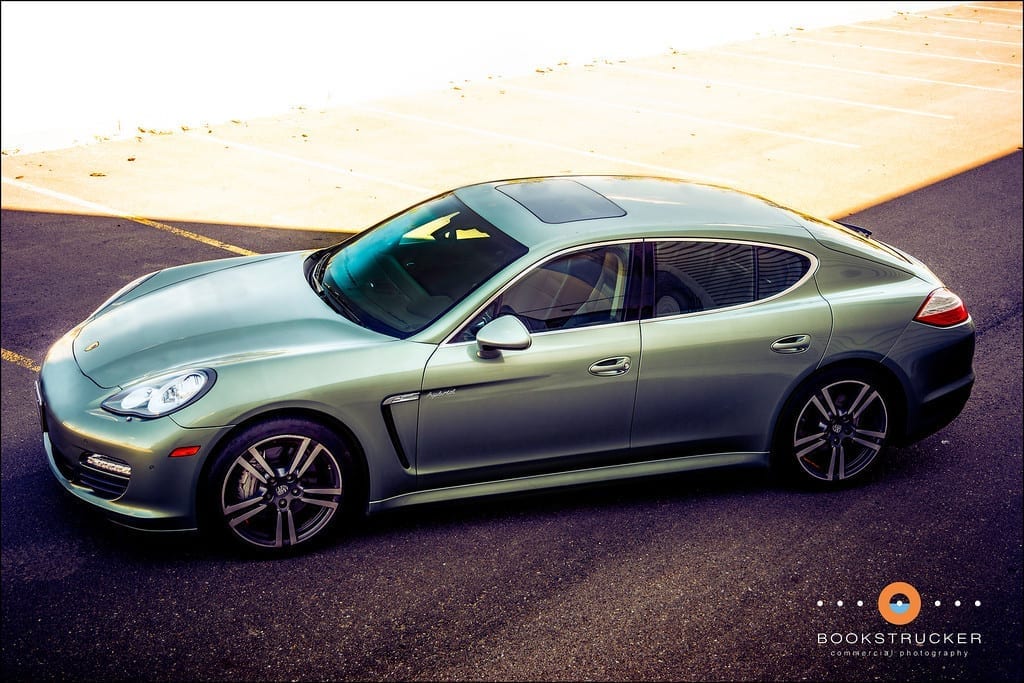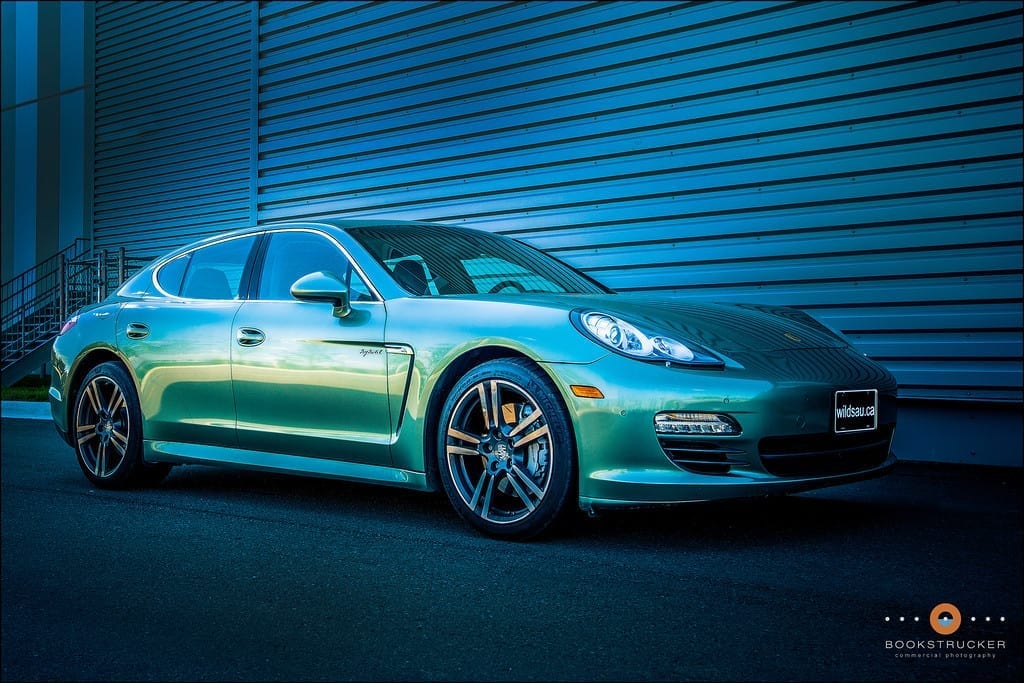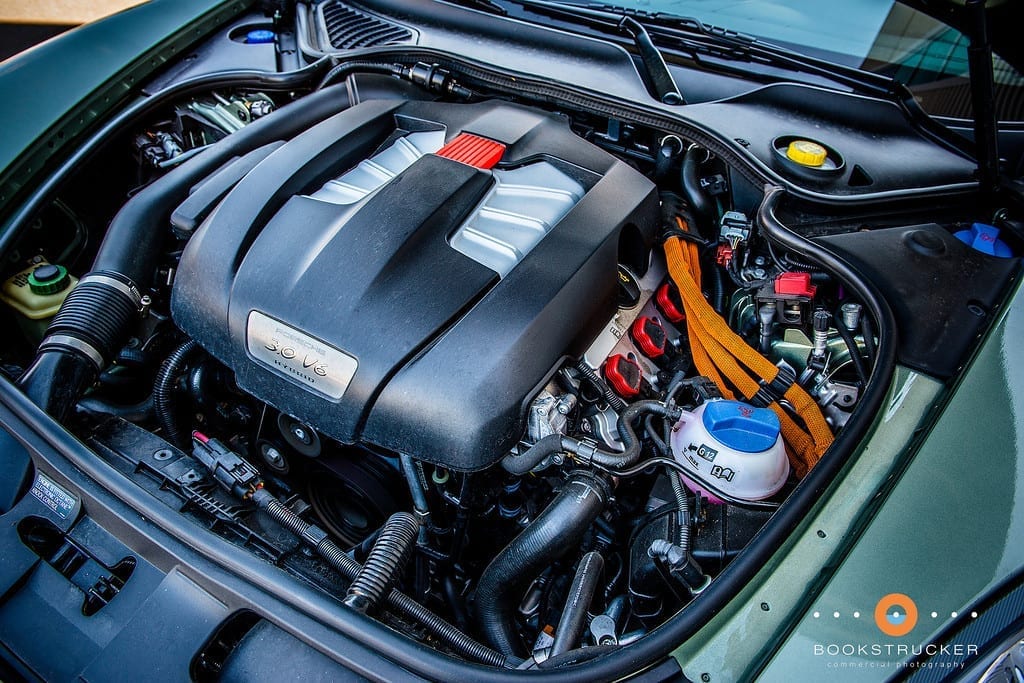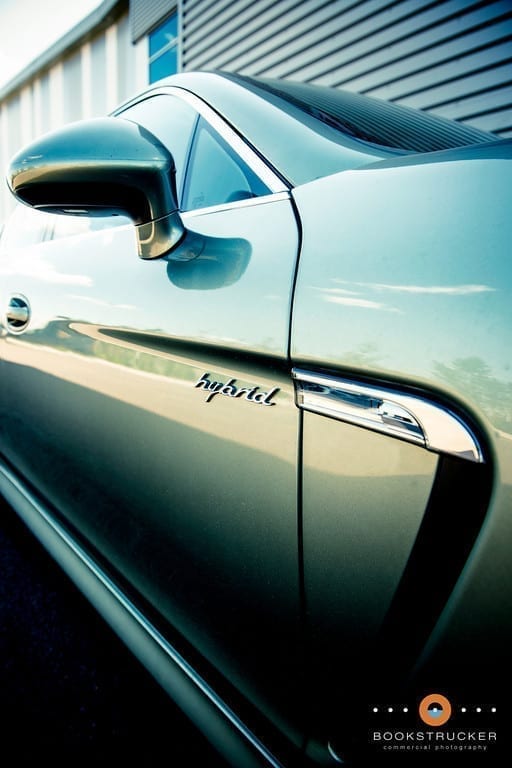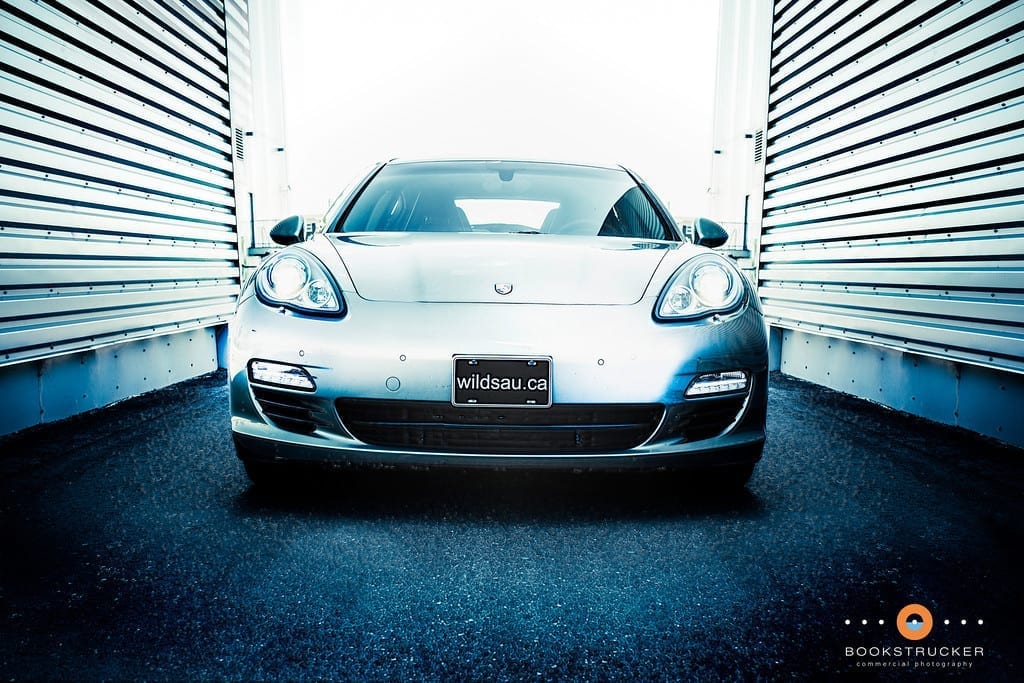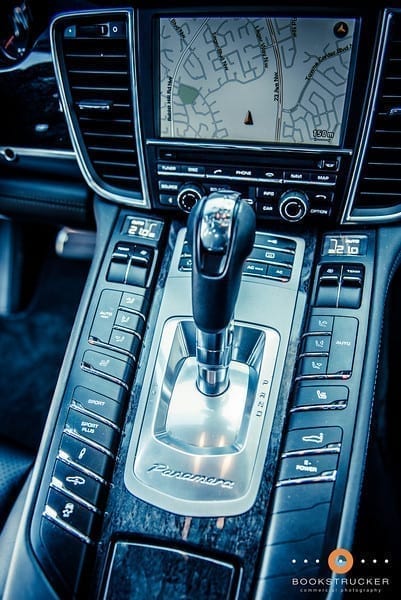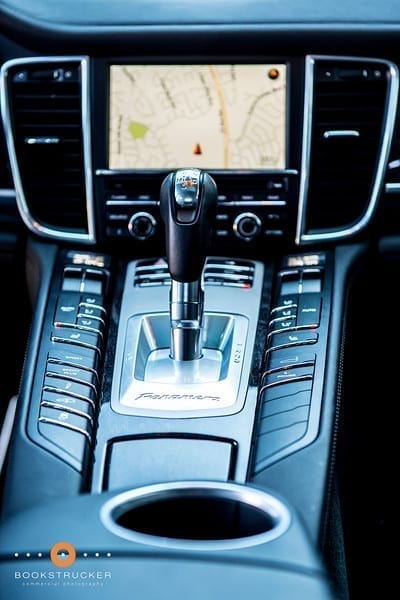Oh sure, the purists have already slung their verbage into the air. “Sacrilege.” “Blasphemy.” You name it, the poor Panamera has heard it.
Mind you, the Cayenne heard it all first. And now, they’ve added the hybrid drivetrain to the Panamera. Those lucky purists seem to have endless fodder for their mutterings, huddled around the slotted hoods of their air-cooled 911s for warmth.
But I see it from a different perspective. Those old 911s and the new ones, which, on paper and on the road, are simply a triumph, cost a fortune to continue to develop. Making something continuously more awesome isn’t cheap. What finances the research and the racing programs that funnel their lessons and technology down into the average Joe’s 911? Well, wouldn’t you know it? A ton of Porsche’s income (and more importantly, profit) comes from the Cayenne and the Panamera. So that you can drive a better 911 each time a new generation hits the street. Anyway, I’ll step off my defensive soapbox and get back to the Panamera.
The Panamera is no cheap date. They start at CDN $87,500. The Panamera S hybrid, optioned as I drove it, comes in at a spittle-stopping CDN $127,395. A-hem.
So. That’s that. Let’s see what you get for your hard-earned or easily-inherited dollars.
Exterior
The styling of the Panamera has certainly caught some flak as well. I’d deem it as love it or hate it, but that’s not really true. The Panamera has so many different angles, with so many different ways of seeing its design that you could be loving it from one facet, and hating it from the next.
I love it, almost from any angle. It’s a low-slung, serpentine car. The shape is unmistakably Porsche, yodeling its 911 heritage through the streets. It’s a surprisingly big car. The vehicle is wide, and those rear flanks get even wider, calling for an XL set of lederhosen and grumpily sliding through my garage door opening. The shape flows from front to back, and there is a nice character line sitting atop the front fenders, all the way along the beltline and finishing over those fat rear haunches.
Sitting on top of that is a large glass cabin, with a deliciously swooshy rear side window. The curve in it fools the eye, and actually oversteps its physical rear door edge boundary, which makes it easy to focus on that instead of the fact that it’s a four door. The sloped nose is all Porsche, and the rear end, although a bit of a bubble butt, shouts out its 911 lineage loud and proud. The overall shape is very smooth, and by the looks of the sloping roofline and the severely angled rear hatch, you’re going to be stuck with a very claustrophobic rear seating area and a negligible trunk space. But perhaps Porsche has a few more tricks up its sleeve…
The front end sports a simple straight line of LED driving lights – now recognizable as a Porsche trait, and bright HID headlights. There’s a purposeful scalloped rear edge of the front fender and all four fenders are filled with (optional) gorgeous 20″ rims and enormous rubber boots – 295s in the back!
In terms of its looks, the Panamera happily sets itself apart from the rest of the automotive world with its styling. And it sits back, relaxed and confident, and says “Take it or leave it.”
Under the Hood
Here’s the real story with this car. Sure there are small cosmetic differences between the different trim levels within the Panamera line, but the drivetrains are what truly separates them. Oh, and speaking of fodder for those hardliners… my goodness, does a hybrid Porsche ever set those tongues wagging!
Porsche’s hybrid starts with a supercharged 3.o-Liter V-6 making 333 HP and 325 lb.ft of torque. Sound familiar? It should. You’ll find it in Audi’s S4 (like the one I reviewed here) and S5 for starters. It’s a great engine. To this, they add a 47 HP electric motor. What’s important is that it can crank out 221 lb.ft of torque – instantly. Combined, the system puts out 380 HP and 428 lb.ft of torque. Sending that power to the rear wheels (no all-wheel drive available on the hybrid) through an 8-speed Tiptronic results in some stellar numbers. Or at least the potential for stellar numbers.
The Panamera S hybrid is rated at 8.6 L.100 km (27 mpg) in the city, and an astonishing 6.8 /100 km (35 mpg) on the highway. Those numbers get even more impressive when you note that you’re pushing a 4,365 pound sedan around. I averaged 11.5 L.100 km (20.5 mpg) during my week with it, often driving it hard and never making an effort to conserve fuel. That’s pretty good when you take everything into consideration!
The Drive
The hybrid badge brought on a chorus of heckling from the peanut gallery. Not just from Porsche purists, but from other motoring enthusiasts. Hybrid automatically conjures visions of Priuses. Or is it Priii? Somehow it’s like the Prius brand is synonymous with the hybrid word. But once you’ve driven a Porsche hybrid, you know full well that there is no comparison. This ain’t your grandfather’s hybrid.
The Panamera simply, and seemingly miraculously at times, overcomes the laws of physics. It’s a heavy car. It’s a big car. Yet, the faster you drive it and the harder you push it, the better it becomes. Cruising around town is an exercise in comfort. The suspension, while firm, soaks up big and small hits alike, and nothing makes its way through to the cabin. Handling is very, very good, and leaves you surprised any time you push it. Want to spice things up a bit? No problem. You can dial in the suspension and drive settings. Sport and Sport Plus modes stiffen things up noticeably, keep the car even flatter around corners and hold the shift points as long as the transmission thinks you want them to be held. You’ll pay for it in terms of comfort, but it is truly incredible what you can achieve on the road and around corners with such a big beast.
Power is never lacking. It has plenty of jam, and although it’s a car programmed to sip fuel when possible, it can sprint from 0-100 km/h in 5.8 seconds. That’s not slow. And there’s no feeling of driving through molasses while you’re on pure electric power. It feels the same as on gas power, and there’s no lag, no hesitation. It’s a very satisfying car to drive. Step on it at highway speeds, and the transmission will take a second to get to the correct gear, but you’ll be hurtled in the right direction very quickly after that, and attaining ludicrous speeds is done with ease. Need to go fast? The hybrid Panamera will sneak right up on 270 km/h (168 mph). The transmission is a Tiptronic, which means it’s NOT the absolutely incredible dual-clutch PDK unit. But it’s a wonderfully smooth, efficient autobox, and it seems very intelligent and adaptable to however you’re driving the Panamera. You can manually shift it with the slap-stick or with steering-wheel mounted paddles.
The hybrid system will shut down the engine whenever you’re at a stop, and even when you’re just cruising at a predictable speed, its “sailing mode” will often shut the gas engine down and propel you at surprisingly high speeds with electric power only. The seamless transition between electric (or E-Power as Porsche calls it) and gas-electric drive modes is fantastic. You actually need to be paying attention to notice when the engine starts up after you glide away silently from a stop.
For all the silence in E-power mode, the V-6 has a nice throatiness to it, and isn’t afraid to bellow it out when you step on the gas. I’m not a big fan of the sounds that most V-6s make, but this is the best-sounding one I’ve driven. To be clear, it’s no comparison to the symphony that follows the V-8 Panameras around. They are simply lovely sounding engines. Speaking of noise, the drivetrain is quiet (unless you’re pushing it), and wind noise at any speed I got to (there were some fairly high speeds, thank you very much) is negligible. But I was a bit surprised at how much road noise often intruded into the cabin. I’m talking levels loud enough that you have to speak up to be heard by passengers.
When the time comes to haul things down again, the brakes are powerful. But they’re regenerative brakes, which recoup energy from the vehicle’s momentum and from heat. But unfortunately, as with other regenerative brake systems, the brake feel gets spongy when you’re light on the pedal. If you’re trying to feather to a stop, you’ll find yourself surprised that the car might keep rolling a bit longer than you thought it would. I hate the sponginess, but I know it’s a necessity here, and you do get used to it.
Visibility out of the Panamera is middling. Looking out of the front and the sides provides excellent views of the road, although you’ve got a seriously long hood in front of you. But shoulder checking is hampered by the enormous, sweeping rear pillars and the rear view is quite constricted.
Oh, pedal placement? Yeah – perfect.
Interior/Tech/Convenience
The Panamera’s interior is a different take on things too. Don’t expect something that competes with other luxo-sedans out there. Nothing here looks or feels conventional. Porsche’s elevated console appears here, and it makes for a very nice, focused driving environment. It’s roomy and spacious, yet feels cozy and enclosed. But never claustrophobic.
The seats, heated and power adjustable, are very comfortable and very well bolstered. A perfect combination for luxury and sport. Materials are top-notch throughout – virtually all surfaces are upholstered or soft-touch, with plenty of stitching to be found wherever your eye falls. This car was optioned with an interesting anthracite birch wood trim. I liked it. Not everyone did. Fit and finish are amazing, and a feeling of sumptuousness hangs in the air. Not painfully so, like in a Bentley Continental – it’s just right.
I have long maintained that Porsche makes the best steering wheels in the industry, and this is no exception. Perfect rim thickness, perfect diameter. It’s manually adjustable, and there are no control buttons on the wheel – that may irritate some, while others will argue it’s required to help the driver focus on the road and on driving. Behind the wheel sits Porsche’s large center tach, flanked by a speedo, a multi-function display and a couple of smaller gauges on the outskirts of the instrument bin.
I’m happy to say that Porsche stubbornly refuses to acknowledge our need in North America for 17 cupholders. You get some small concessions here and there, but don’t head to 7-11 for your 36 ounce Slurpee in this car. It’s like Porsche wants to remind us that driving is more important than shoveling your venti macchiato into a void in the console. Speaking of stubbornness, Porsche’s complete disregard for ergonomics continues here too. The center console, the center stack and the driver’s door panel are just seas of look-alike labeled buttons. There’s no way you’re using any of them without taking your eyes off the road. We’ll continue with the theme of take it or leave it.
The touch-screen at the top of the stack manages a number of functions. It works pretty well and responds to touch quickly, but the user interface isn’t the best. There’s no dedicated input knob/joystick/etc and as far as I could tell, there was no hands-free user input here. Seriously?! The screen also monitors the back-up camera which comes with trajectory markings – I LOVE those! The camera is augmented by front and rear parking sensors. They make nice beeps and you also see an outline of your car on the screen and you’re shown where the problem areas are – and where you’re about to scuff up your $3,600 optional paint job.
The BOSE stereo system feeds off AM, FM, CD, auxiliary and USB sources. It sounds good, but let me be very clear about this – if you’ve ever heard the ridiculously priced Burmester stereo upgrade in a Panamera, you will have experienced a new level of listening in an automobile. If you can afford it, and who couldn’t if they’re buying a Panamera, get the Burmester system. It is a revelation.
The climate control system is a dual-zone automatic one, with displays on either flank of the console to show you that zone’s temperature.
There are plenty of toys to play with. The aforementioned Sport and Sport Plus drive modes, setting the ride heights, raising and lowering the rear spoiler, and on and on.
Rear Seats
I know I alluded to the possibility of a tight rear seat because of the shape of this car. Not so, my friends. I was taken aback by the roominess here. There are two very comfortable (and well-bolstered) bucket seats, separated by a narrow console. There are some air vents, a small storage area, an ashtray and a cigarette lighter. Now THAT’S a flashback.
Oh, and to prove how seriously the Germans take their smoking, you also get an additional ashtray in each door. Hans-Friedrich could go through a whole pack on a road trip, and never have to stop.
Headroom and legroom are exemplary, and ingress and egress rival any other 4-door out there for ease. Somehow, and this is hard to explain, it feels as though sitting in the back of the Panamera involves you in the driving experience. Even being a rear passenger lets you focus on the drive somehow. I know, it sounds nebulous, but try it sometime and see it for yourself.
Transporting kids (well, up to two of them) is no problem – there are 2 LATCH anchors, and the doors open nice and wide to help get kids in and out.
My kids pointed out that there are 4 air vents for each rear passenger, for a total of 8. That’s some serious climate control for the commoners back there.
Storage
There isn’t a whole bunch of it. You get a decent glove compartment, tilt-out (but still tiny) door bins, and a decent bin under the armrest lid – this is where you’ll find the auxiliary and USB plugs as well.
The cargo space beneath the enormous rear hatch isn’t negligible as I warned it might be, but it’s not huge either. It’s covered by a nice hard tonneau lid that swings up with the hatch, and there’s a mesh side pocket for hanging onto small items. As the battery pack for the hybrid system sits beneath the trunk floor, you do lose a little bit of storage capacity versus the non-hybrid Panameras, but it’s still a very decent and wholly usable space. Should you find yourself in a pinch, you can easily flip the rear seats down, and you’re looking at 40.7 cubic feet (1152 Liters) of room. That’ll do you just fine.
Nitpicks
I’ve tested sub-$20,000 vehicles where the little things are standard equipment. Like satellite radio. Or lumbar adjustment for the seats. Or a push-start ignition. They didn’t come with this car. Even optioned out at nearly $130,000. It’s the Porsche way. Options are a very good way to make profits, and as with any of their products, you can take them or you can leave them.
The Verdict
Porsche is a brand that speaks volumes. It means a lot of things to a lot of people. Many have spoken unkindly of the “less sport-focused” offerings of late, the Cayenne and now the Panamera. But once you’ve driven one, you simply can’t argue with its ability to transcend so much of what holds mortal vehicles back. Porsche is somehow able to infuse even these “pedestrian” 4-doors with a sense of sport, a nod at their heritage, and an ability to make you smile. The biggest difference is that they also add utility and family-friendliness.
The Panamera is a premium sedan that brings individual styling to the table and adds incredible handling ability to superb creature comforts. Stability at any speed is a given. I can’t imagine many people taking a Panamera for a drive, be it a luxurious jaunt or a hard and fast lap, and stepping out of it to tell you it wasn’t good. Because it is. It is a good car to drive.
So how does the Panamera S hybrid fare? I fear that it will remain a slow seller, relatively speaking. I couldn’t quite figure out where it slots in. You can get the base engined Panamera for $20,000 less. So the argument that you’ll be saving money on fuel is moot because it would take you an eternity to make up the difference. Or, if you’re fine with spending this much, you can also get the Panamera 4S for the same price as the hybrid. It’s powered by the mighty V-8, and coupled with an incredible all-wheel drive system, taking you to the other end of the spectrum. Alternatively, you might also be looking for the combination of all-wheel drive and slightly more utility and seating – there’s always the Cayenne hybrid which has the same drivetrain stuffed into an SUV.
I guess the hybrid Panamera is for the buyer who wants its ability to do something different, while remaining almost the same. It offers the same tremendous competence, luxury, ride and handling as its brethren, it’s faster than the V-6 Panamera, and has the ability to attain extraordinary fuel economy for this class of vehicle.
I give the Panamera S hybrid a solid 8.5 out of 10. If it were 15 grand less, and only slightly more than the V-6, it would have been a 9.
WAF (Wife Acceptance Factor) was … um, well … out of this world. She absolutely loved the Panamera. She loved the styling. She loved how it felt inside. She loved the ride. She loved the trunk. She loved that it was a Porsche, and she loved that it was an automatic transmission. She loved the envious looks she got from soccer moms. I loved that she couldn’t get as much shopping into the trunk as she does in her mini-van. This is a win-win vehicle.
I loved the feeling of exclusivity I got when I stepped into the Panamera. I loved that many things feel as though Porsche needs to go above and beyond. Not because they want to beat out the competition. But because it is who they are. I loved driving the Panamera. I loved the looks it got from knowing enthusiasts, from uninformed but curious and appreciative onlookers and even the head-shakes from a couple of crusty hardliners who likely thought I was riding the white horse of the Auto-Apocalypse.
Fear not, hardliners. This isn’t the end. Think about it long and hard, and you might start to agree with me that this is something completely different.
This is the beginning. Of something new. And inevitable.
Porsche tags this car with the line: “Hybrid, uncompromised.” You’ll get no argument from me.
I think this is nothing but a wonderful showcase of where Porsche is headed. And it is good.
Disclosure: Vehicle was provided by Porsche.
All photo credits – Bookstrucker Photography. I can’t thank this remarkable photographer enough for the time he spent getting to know this car, and documenting the broad strokes and subtle nuances with his lens.
If you enjoyed this review, feel free to check out my other vehicle reviews under the car reviews tab at the top of my blog.


